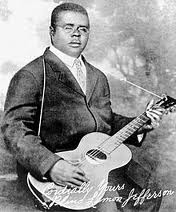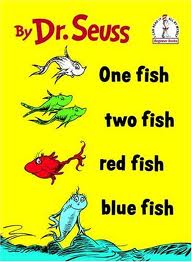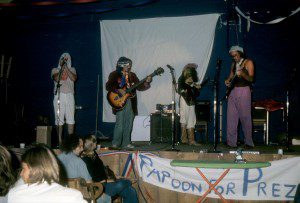In 1969 I was captivated by Captain Beefheart’s release, Trout Mask Replica. It was distinctly un-pop, to put it mildly. It borrowed mainly from the blues and modern art but because the Captain’s ensemble, the Magic Band, was composed of long-haired, white-ish, hippie types, the album was categorized as rock. The Captain was doing for rock what Eric Satie had done for classical music—thumbing his nose at convention.
About a year later I would get my first guitar and begin to use it as my primary instrument in the lifelong pursuit of art, observation and catharsis. After I had mastered some chords, I graduated to a study of the early country blues practitioners—Blind Lemon Jefferson,  Robert Johnson, Mississippi John Hurt, Skip James, Blind Blake—and their singular picking techniques and sometimes obscure lyrical explorations. This led me to create my own guitar and songwriting style. Because we are all the sum of that which has made an impression upon us, I also had Dr. Seuss, first read to me by my mother, lurking in my thought waves. Kids are often exposed to radical thinking and I hope that never changes.
Robert Johnson, Mississippi John Hurt, Skip James, Blind Blake—and their singular picking techniques and sometimes obscure lyrical explorations. This led me to create my own guitar and songwriting style. Because we are all the sum of that which has made an impression upon us, I also had Dr. Seuss, first read to me by my mother, lurking in my thought waves. Kids are often exposed to radical thinking and I hope that never changes.
So about 1974 I combined all of the above and created the song, Slumped Over. Upon reflection, it is a nursery rhyme for psychedelic adults. It is a 4-act play for existential absurdists. I played Slumped Over several times with an early manifestation of the Barking Geckos, including a performance at the National Surrealist Party’s 1976 convention at Off The Wall Hall in Lawrence, Kansas.
I collaborated with Mitch Rosenow on a now lost recording of the tune in the living room of Mitch’s flat on Vermont Street in Lawrence. I recall that the recording featured slammed doors, thrown boxes of junk and lots of reverb.
Then, in 1982, I directed opera tenor John G. Andrews in a Slumped Over music video, shot mainly in the dingy basement bar of the Lawrence Opera House. John sang the song to the live accompaniment of my off-camera guitar and Dana Elniff’s saxophone while Gerry Cullen’s clunky video camera recorded the grainy shenanigans.
Finally, last August (or September?) I again recorded the song in my basement—what’s this thing with basements?—but this time with engineer, Chuck Kawal, placing the mics and twiddling the dials. Steve Eisen contributed a sax part and Chuck, after overcoming his exasperation at the melodic structure of the tune, played a guitar solo in the break. I played my guitar arrangement on both acoustic and electric and added some quite necessary kazoo parts. The song was finally getting a worthy sonic treatment. Chuck completed the mix just last week and it is now available for your listening pleasure. 40 Years in the making:



